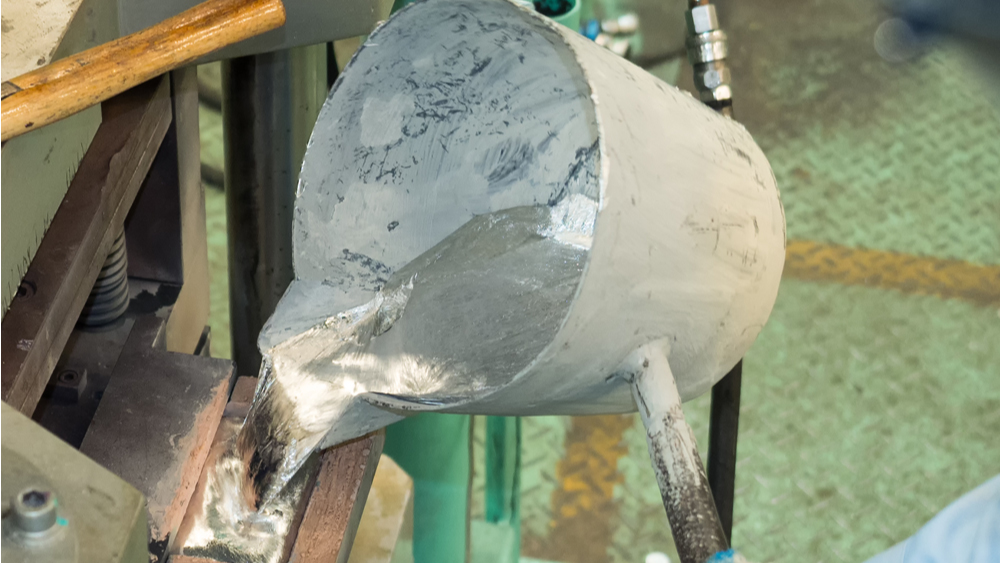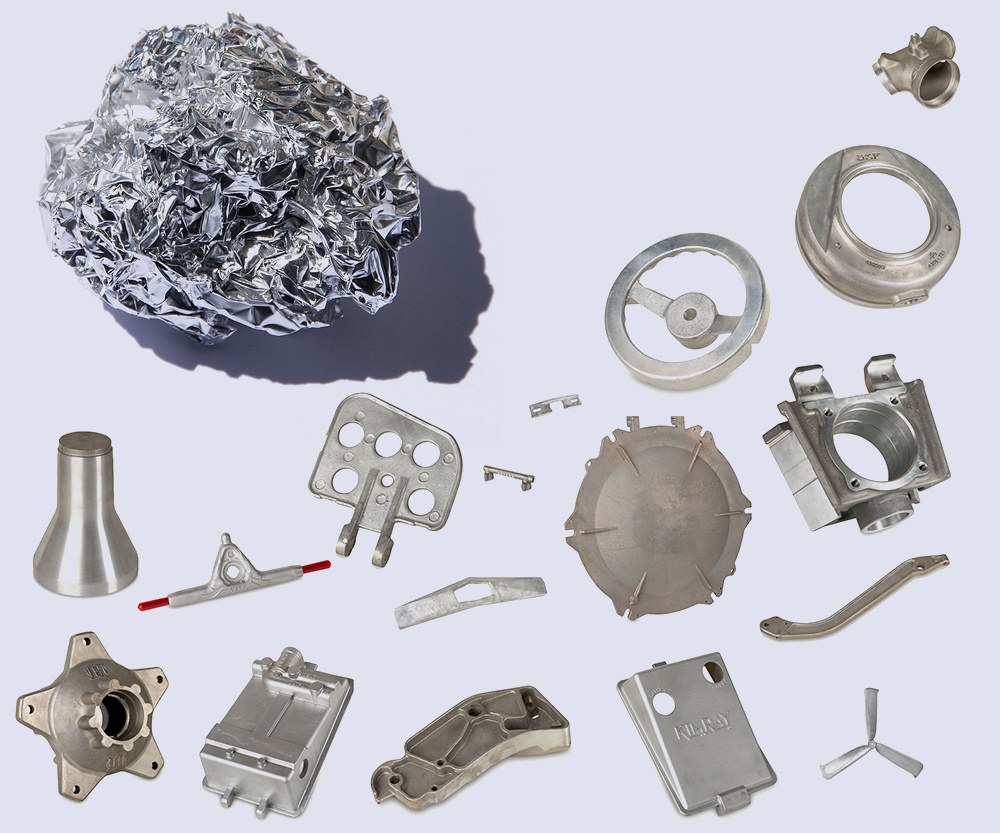Aluminum Casting vs. iron casting: Which option is better?
Every little thing You Need to Find Out About the Uses and Benefits of Aluminum Castings
Aluminum castings play an important role across numerous sectors, using special residential or commercial properties that enhance item efficiency. Their lightweight nature and strength make them perfect for applications in automobile and aerospace sectors. In addition, the flexibility of casting techniques enables intricate layouts and tight resistances. As the need for sustainable solutions climbs, comprehending the benefits and applications of aluminum castings comes to be progressively important. What details advantages do they offer over various other materials?
Review of Aluminum Casting Processes
Aluminum casting processes encompass a range of strategies utilized to shape liquified aluminum right into desired types. These techniques include sand casting, pass away spreading, and financial investment casting, each offering unique benefits depending on the application (Aluminum Casting). Sand spreading entails producing a mold and mildew from sand, permitting for intricate styles and huge parts, while die casting makes use of high pressure to inject liquified aluminum into steel molds, making certain precision and smooth surfaces. Investment casting, additionally referred to as lost-wax spreading, generates complex forms with superb dimensional accuracy, making it appropriate for detailed components
These procedures are identified by their ability to generate light-weight, durable components that exhibit superb corrosion resistance. The flexibility of aluminum enables for personalization in numerous sectors, from automobile to aerospace. In addition, the ability to recycle aluminum boosts the sustainability of these casting procedures, reducing environmental effect while maintaining material stability. Comprehending these strategies is important for enhancing production effectiveness and accomplishing high-grade aluminum castings.
Trick Applications of Aluminum Castings
Aluminum castings play an important function across different markets, especially in vehicle, aerospace, and customer electronic devices. In the auto field, they add to light-weight frameworks that boost gas efficiency. Aerospace components benefit from aluminum's strength-to-weight proportion, while customer electronics leverage its versatility for reliable manufacturing.
Automotive Market Applications
As the automobile industry proceeds to advance, makers progressively depend on aluminum castings for their lightweight yet durable residential properties. These castings play a crucial function in boosting automobile performance, gas effectiveness, and general safety. Trick applications include engine blocks, transmission real estates, and architectural components, which profit from aluminum's outstanding strength-to-weight ratio. Additionally, aluminum castings help with complex geometries, allowing for innovative designs that enhance the rules of aerodynamics and reduce drag. The deterioration resistance of aluminum likewise adds to durability, decreasing maintenance expenses for both producers and consumers. As electrical cars gain appeal, aluminum castings are crucial for battery enclosures and various other elements, better solidifying their importance in the future of vehicle manufacturing.
Aerospace Part Manufacturing
In the aerospace field, aluminum castings are essential to the manufacturing of light-weight, high-performance parts. These castings are vital for manufacturing components such as engine housings, structural structures, and landing gear parts, where weight reduction is important for gas performance and general efficiency. The excellent strength-to-weight ratio of aluminum enables for the growth of complex geometries that improve the rules of aerodynamics. In addition, aluminum's resistance to corrosion adds to the long life and reliability of aerospace parts, ensuring safety in trip procedures. The spreading procedure also permits accurate resistances, which is crucial in meeting rigid aerospace sector criteria. In general, aluminum castings play a critical role ahead of time aerospace technology while sustaining the market's promote lasting techniques.
Consumer Electronics Manufacturing
Making use of aluminum castings in customer electronic devices manufacturing has actually become increasingly considerable as a result of their lightweight and durable residential properties. Suppliers utilize these castings to produce components for various gadgets, consisting of mobile phones, laptop computers, and video gaming consoles. Aluminum's superb thermal conductivity also helps in warmth dissipation, enhancing device efficiency and durability. The flexibility of aluminum permits for detailed styles and intricate geometries, making it possible for streamlined and modern-day visual appeals that appeal to consumers. Additionally, aluminum castings can be conveniently recycled, lining up with the growing demand for sustainable manufacturing practices. As modern technology breakthroughs, the function of aluminum castings in developing cutting-edge and efficient consumer electronics is expected to broaden, making them a staple in the industry.

Advantages of Making Use Of Aluminum Castings
While different products are readily available for casting, aluminum attracts attention because of its one-of-a-kind mix of lightweight properties, stamina, and deterioration resistance. The low density of aluminum makes it an ideal option for applications where weight decrease is important, such as in the auto and aerospace markets. Its excellent strength-to-weight ratio enables producers to create long lasting parts without adding excessive weight.
Additionally, aluminum castings can be created with detailed designs and tight resistances, making it possible for complex geometries that are challenging to attain with various other products. The adaptability of aluminum enables various casting techniques, including sand, die, and investment casting, accommodating varied production needs. Aluminum's convenience of machining and ending up enhances its appeal, promoting the production of top notch surface area coatings. Generally, the benefits of utilizing aluminum castings add to enhanced performance and performance view it now in countless applications throughout various markets.
Rust Resistance in Aluminum Castings

All-natural Oxide Layer
A natural oxide layer forms on the surface area of aluminum castings, offering an important barrier versus environmental variables that can result in wear and tear. This thin, safety movie is a result of the aluminum's response with oxygen airborne, effectively securing the underlying steel from wetness, chemicals, and pollutants. Therefore, aluminum castings exhibit excellent rust resistance, which boosts their durability and longevity in numerous applications. The oxide layer is not only advantageous for protection yet additionally adds to aesthetic qualities, as it can establish a matte coating that several sectors like. Additionally, this all-natural process decreases the need for added coverings, making aluminum castings a cost-effective option for suppliers seeking reliable, resilient materials.
Alloy Variations Influence
The make-up of aluminum alloys substantially affects their rust resistance properties in castings. Different alloy variations, such as 1xxx, 2xxx, and 6xxx series, display distinct degrees of sensitivity to corrosion. As an example, 1xxx alloys, primarily made up of pure aluminum, offer superb deterioration resistance because of their high pureness. On the other hand, 2xxx alloys, which consist of copper, might experience substantial deterioration when subjected to severe settings. On the other hand, 6xxx alloys, including magnesium and silicon, strike an equilibrium between strength and resistance. The presence of alloying aspects can improve or decrease safety oxide layers, eventually affecting long life and efficiency. Comprehending these variations is necessary for choosing the right alloy for particular applications where corrosion resistance is important.
Style Flexibility and Modification
Various products exist for casting applications, aluminum stands out due to its exceptional layout adaptability and potential for personalization. This flexibility enables designers and engineers to create elaborate shapes and types that fulfill particular useful needs. Aluminum Casting. The reduced density of aluminum allows lightweight styles, which is specifically beneficial in markets such as automobile and aerospace, where weight decrease is necessary
Aluminum castings can be tailored to various requirements, consisting of wall surface density, surface area coating, and dimensional tolerances. This adaptability not just improves the aesthetic appeal yet additionally improves the performance of the last item. In addition, progressed strategies such as 3D printing and computer-aided design (CAD) further help with the modification procedure, enabling rapid prototyping and lowering preparations. As a result, aluminum castings can efficiently satisfy the diverse needs of various industries while supplying producers the ability to introduce and respond rapidly to market needs.
Comparison With Other Casting Materials
While different casting products each have their unique advantages, aluminum constantly shows premium residential or commercial properties that make it a recommended selection in many applications. Compared to iron and steel, aluminum is considerably lighter, which decreases the overall weight of completed items, boosting gas efficiency in automotive and aerospace industries. Moreover, aluminum offers outstanding rust resistance, needing less maintenance in time compared to materials like iron, which can rust.
When compared with plastics, aluminum's stamina and longevity go beyond several artificial options, making it appropriate for demanding atmospheres. In enhancement, aluminum's thermal and view it electrical conductivity is incredibly greater than many other metals, making it ideal for applications requiring reliable warmth dissipation or electrical components.

Future Trends in Aluminum Casting Innovation
Improvements in aluminum spreading modern technology are set to redefine its applications throughout various industries. Developments in automation and robotics are simplifying production processes, boosting efficiency and precision. The assimilation of expert system and equipment knowing makes it possible for real-time surveillance and predictive maintenance, minimizing downtime and boosting quality control.
The advancement of innovative alloys is expanding the performance capabilities of aluminum castings, making them appropriate for even more demanding applications, especially in automotive and aerospace industries. Sustainable methods are likewise getting grip, with boosted focus on reusing aluminum and lowering carbon impacts throughout production.
Additive production strategies, such as 3D printing, are being discovered to develop intricate geometries that typical approaches can not attain, permitting better style adaptability. These fads show a future where aluminum spreading will certainly not only satisfy however surpass market expectations, driving development and sustainability in production.
Frequently Asked Questions
Just How Are Aluminum Castings Recycled After Usage?
Aluminum castings are normally gathered, cleaned up, and processed in reusing centers. The material is melted down, improved, and afterwards reformed into brand-new products, thereby preserving sources and decreasing ecological effect while preserving aluminum's desirable residential or commercial properties.
What Are the Typical Prices Linked With Aluminum Castings?
The common costs connected with aluminum castings vary based on aspects such as complexity, quantity, and material specifications. Usually, costs vary from a few dollars per extra pound to considerably greater amounts for detailed styles and large amounts.
How Do Aluminum Castings Contrast in Weight to Steel Castings?
Aluminum castings weigh substantially less than steel castings, commonly around one-third the weight (Aluminum Casting). This decreased mass permits much easier handling, transport, and application in different click to read more sectors, adding to boosted performance in layout and manufacturing processes
What Industries Largely Rely Upon Aluminum Castings?
Numerous industries substantially depend on aluminum castings, consisting of vehicle, aerospace, electronic devices, and customer items. Their lightweight nature, deterioration resistance, and flexibility make them crucial for manufacturing elements in these fields, enhancing efficiency and performance.
Are There Any Wellness Threats Related To Aluminum Casting Processes?
Health and wellness threats connected with aluminum casting processes consist of direct exposure to fumes, dirt, and chemicals, which can lead to breathing problems and skin irritability. Appropriate safety procedures and tools are important to mitigate these possible risks in the office.